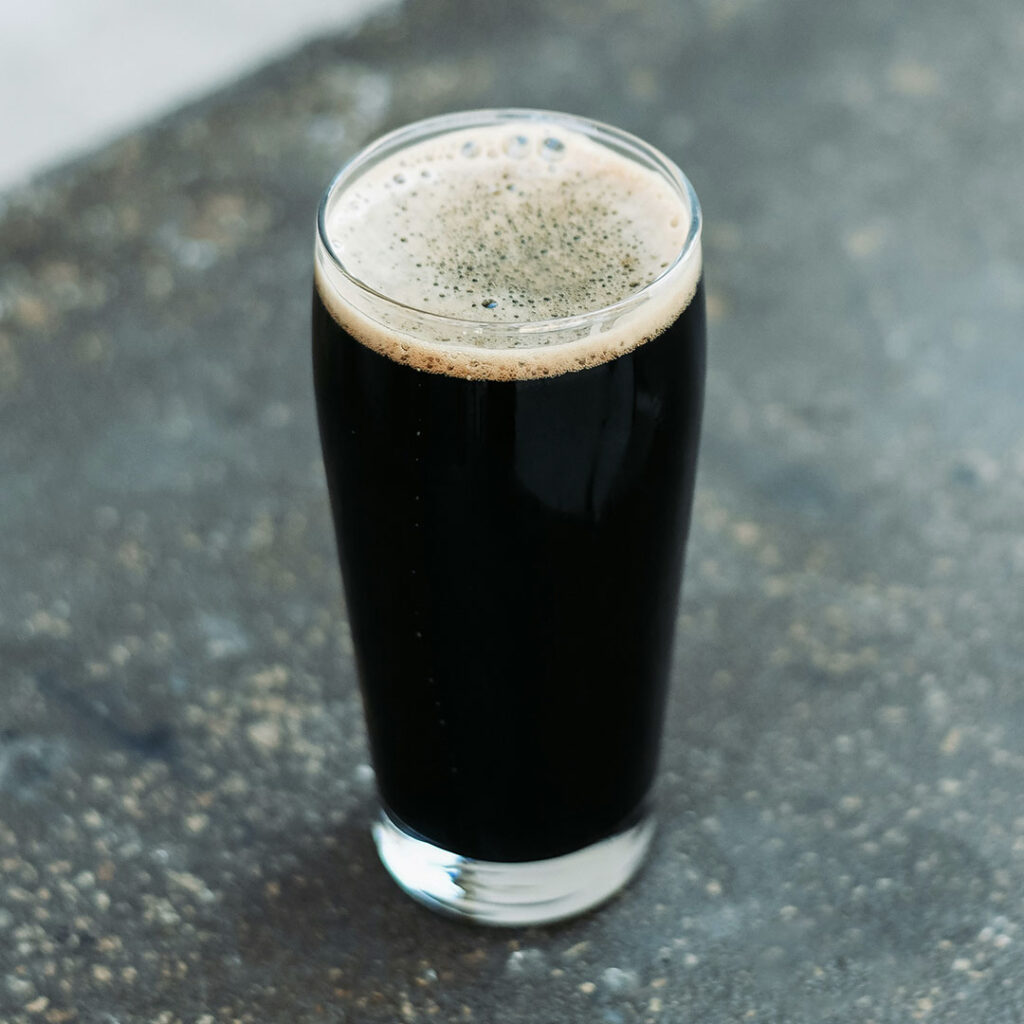Porter originated in London about three centuries ago, giving it a long and rich history. But where does the name come from? Well, it became especially popular among porters – workers who transported goods to pubs from local markets. Therefore, it is likely that the beer was named after them. Over time, the Porter recipe evolved, adapting to new brewing techniques and ingredient choices while maintaining its signature dark, smooth, and flavourful character.

A Style in Constant Evolution
Beer historians believe that Porter evolved from Brown Ales, which were widespread at the time. Since then, the style has continuously developed in terms of ingredients, brewing techniques, and flavour. Like many traditional beer styles, Porter nearly disappeared after the World Wars. However, with the rise of craft brewing, it made a strong comeback and continues to thrive today.
During the 19th century, Porter became widely exported, first across Europe and later to the United States. The English version remains relatively unchanged – soft, sweet, and caramel-like. However, foreign variations have taken on distinct characteristics. For example, American Porters are stronger, have a higher gravity, and feature a noticeable hop presence. In the Baltic region, where lager brewing dominated, brewers adapted Porter into a high-ABV, bottom-fermented Baltic Porter.
Meanwhile, the Russian, or Imperial Porter, emerged due to exports to St. Petersburg. It quickly gained popularity among the British diplomatic community, especially after Queen Victoria’s daughter married the Tsar. As a result, Russian Porter became known for its bold and intense flavour.
Grain bill
| Variety | Quantity | Quantity | Colour EBC | Colour ºL | Ratio |
|---|---|---|---|---|---|
| Swaen Ale | 4 kg | 8.8 lb | 7 | 2.6 | 70% |
| Swaen Munich Light | 0.7 kg | 1.5 lb | 14 | 5.3 | 12% |
| Gold Swaen Munich Light | 0.4 kg | 0.88 lb | 100 | 38 | 7% |
| Platinum Swaen Brown Porter | 0.3 kg | 0.66 lb | 425 | 160 | 5% |
| Black Swaen Chocolate B | 0.2 kg | 0.44 lb | 900 | 339 | 4% |
| Black Swaen Black Extra | 0.1 kg | 0.22 lb | 1300 | 490 | 2% |
For the base malt, we recommend using Ale malt, with some Munich malt for a fuller, richer character. Special malts also play an essential role in this style. Crystal (Cara) malts enhance caramel flavours and residual sweetness, which helps to balance the bitterness of hops and roasted grains. A mid-colour caramel malt should work well.
Historically, a Porter recipe used brown malt, a very dark base malt. We recommend Platinum Swaen Brown Porter, which we kiln – not roast – at lower temperatures to prevent burnt flavours. By increasing its ratio compared to roasted malts, you can achieve a smoother result. To ensure proper starch conversion, we suggest a single-step mash at 67ºC / 153ºF for 60 minutes.
Hops
| Variety | Quantity | Quantity | Duration | Alpha acid | IBU |
|---|---|---|---|---|---|
| Challenger | 28 g | 1 oz | 60 min. | 9% | 27 |
| Challenger | 28 g | 1 oz | 10 min. | 9% | 10 |
Since Porter emphasises malt character, hop selection is relatively straightforward. Traditional English varieties such as Fuggles, East Kent Goldings, Northern Brewer, or Challenger work well. However, for an American version, feel free to substitute local hop varieties. It is best to distribute hops evenly between bittering and aroma additions. Additionally, make sure your hops have enough character to balance the bitterness of roasted malt.
Yeast
Most English or American-style ale yeasts work well in a Porter recipe. If you prefer a fuller body, we recommend using a lower-attenuating strain. To achieve the best results, ferment at 20°C / 68°F. Additionally, as with many strong beers, higher-ABV Porters require longer ageing to develop their full depth of flavour. Therefore, patience is key when brewing this classic style.
Dry examples: Fermentis Safale S-04 or Mangrove Jack M36 Liberty Bell Ale.
Liquid examples: WLP002 English Ale or Wyeast 1028 London Ale.
Results
| Batch size | 23 L / 6 gallon |
| Efficiency | 75% |
| Original gravity | 1055 |
| Final gravity | 1012 |
| Colour EBC | 57 |
| Colour Lovibond | 22 |
| IBU | 37 |
| ABV % | 5.6 |
| Carbonation | 2.2 |
| pH | 5.0 |
Appearance
Deep brown colour, with creamy foam.
Taste profile
Platinum Swaen Brown Porter – paired with other specialties – definitely brings you what you need for a Porter; an intense range of chocolate, coffee and caramel flavours, but without the burnt, roasty aroma.
Food pairing
Beef dishes, BBQ


